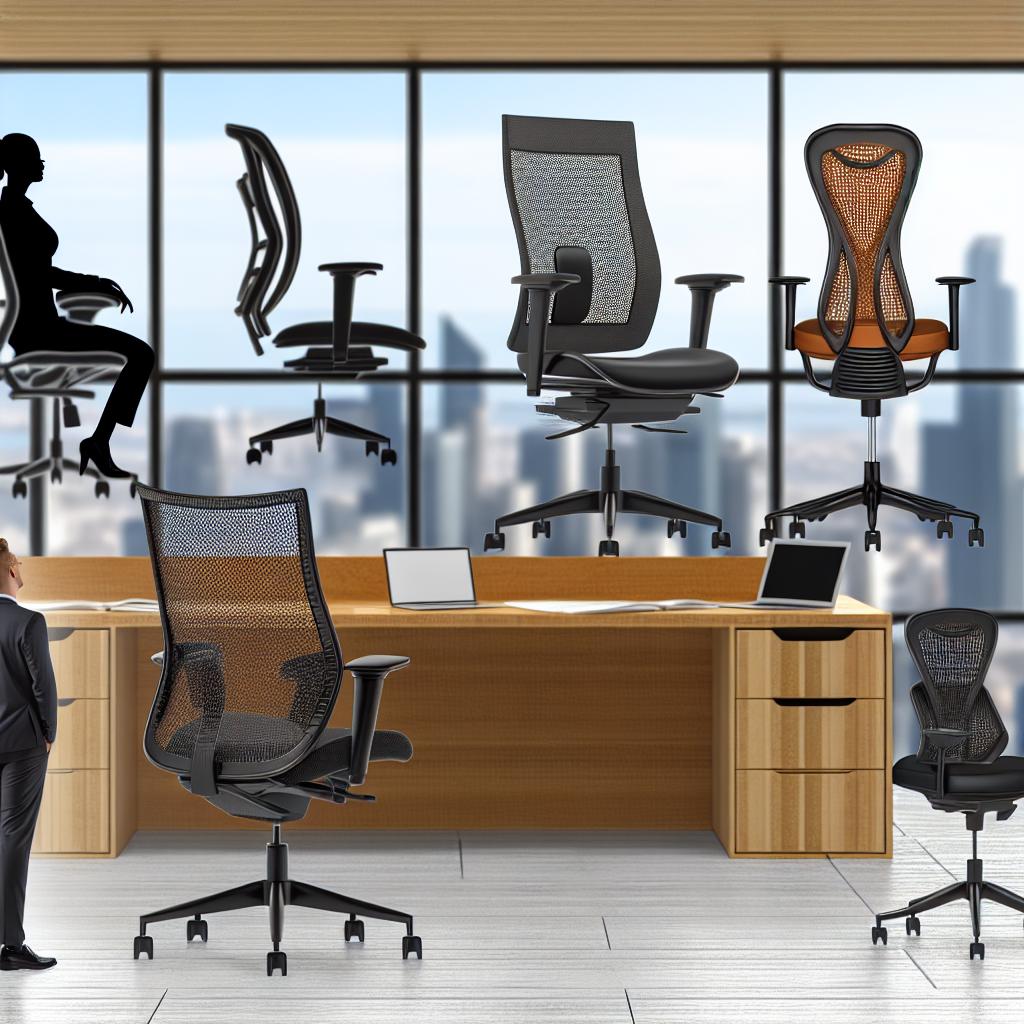Introduction to Office Chairs with Back Support
Finding the right office chair can significantly impact your posture and overall comfort during long hours of work. Office chairs with back support are essential to reducing the risk of developing back pain or long-term spinal issues. This document explores some of the key features and types of office chairs known for providing excellent back support.
Key Features to Look For
When selecting an office chair, there are several features you should prioritize to ensure optimal back support:
Ergonomic Design: A chair with an ergonomic design will typically include adjustable components to support your natural posture. Look for chairs with lumbar support, which assists the lower back and reduces stress on the spine. An ergonomic design accommodates the natural curve of your spine, ensuring that you maintain a healthy alignment. This attention to spinal alignment is crucial in preventing strain and discomfort that can occur from prolonged periods of sitting.
Adjustable Lumbar Support: Some chairs offer adjustable lumbar support that allows users to customize the positioning to match the curvature of their spine. This adaptability is essential for personalized comfort. The ability to adjust lumbar support means that you can fine-tune the support to the precise area of your lower back that needs it the most, which can vary greatly between different individuals.
High-Back vs. Mid-Back: Deciding between a high-back and a mid-back chair depends on your comfort preference. High-back chairs provide support to both the upper and lower spine, which can be beneficial for taller individuals. They often come with a headrest that aids in relaxing the neck and shoulders. Mid-back chairs offer adequate support for the lower and middle spine regions and are typically more compact, making them suitable for smaller workspaces.
Quality Padding and Material: The material covering the chair should offer sufficient padding for comfort without compromising support. Breathable materials such as mesh can provide both comfort and proper ventilation. Padding should be firm enough to maintain shape over time but soft enough to conform to your body. Materials like leather, fabric, or mesh each have their unique benefits ranging from aesthetics to breathability.
Types of Office Chairs for Back Support
Mesh Chairs: Mesh office chairs are known for their breathability and flexible support. The mesh material contours to the shape of your back, offering consistent support while allowing air circulation to prevent discomfort from heat build-up. This type of chair is ideal for warmer climates or lengthy periods of sitting due to its cooling properties.
Kneeling Chairs: These chairs promote an open hip angle by positioning the sitter with knees lower than the hips. This posture alleviates pressure on the lumbar spine and encourages an upright sitting posture. By allowing the pelvis to tilt forward, kneeling chairs can help distribute body weight evenly, reducing the potential for back strain.
Saddle Chairs: Designed to mimic the posture of horseback riding, saddle chairs open the hips and improve spinal alignment. They are often used in environments that require dynamic movement, like dental offices and workshops. The saddle design naturally aligns the spine and encourages active sitting, making them suitable for activities requiring frequent movement.
Exercise Ball Chairs: Although unconventional, exercise ball chairs can engage the core muscles while promoting a balanced posture. They are typically used as alternative seating options to traditional office chairs. The instability of the ball encourages constant micro-movement that can enhance core stability and improve posture.
Considerations When Choosing an Office Chair
Before making a purchase, it’s essential to evaluate your specific needs:
Height and Weight Capacity: Chairs vary in their ability to support different user heights and weights. Ensure the chair you choose fits your physical dimensions for optimal support. This is crucial not only for comfort but for the durability and longevity of the chair. A chair should accommodate your frame without requiring awkward adjustments that might compromise support.
Work Environment: Consider the nature of your work environment. For example, if you require frequent mobility, a chair with wheels and a swivel function would be beneficial. In contrast, a more stable chair may be preferable in settings where static posture is more critical.
Budget: While investing in a quality office chair is important, there are various options available across different price ranges. Determine your budget constraints and seek chairs that offer the best features within your limits. While less expensive chairs may appear attractive, investing in a well-designed chair is an investment in your health.
Conclusion
Selecting the right office chair is crucial for maintaining back health while working. By focusing on features such as ergonomic design, lumbar support, and material quality, you can find a chair that meets your specific needs. Remember to assess personal requirements and test different options to achieve the best fit for your workspace. Exploring options and taking the time to understand what works best for your body can lead to a more comfortable and productive work environment. Keeping in mind the importance of back support and ergonomic design tailored to personal comfort will help prevent issues related to prolonged sitting.




